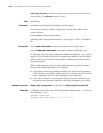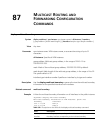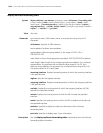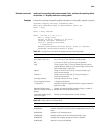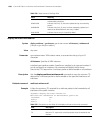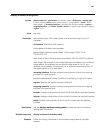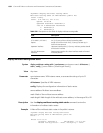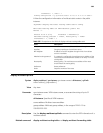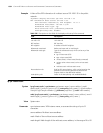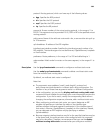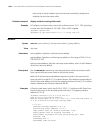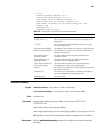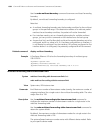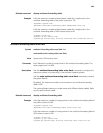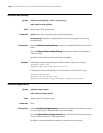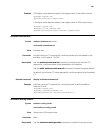
1334 CHAPTER 87: MULTICAST ROUTING AND FORWARDING CONFIGURATION COMMANDS
Example # View all the RPF information of multicast source 192.168.1.55 in the public
network.
<Sysname> display multicast rpf-info 192.168.1.55
RPF information about source 192.168.1.55:
RPF interface: Ethernet1/0, RPF neighbor: 10.1.1.1
Referenced route/mask: 192.168.1.0/24
Referenced route type: igp
Route selection rule: preference-preferred
Load splitting rule: disable
ip rpf-route-static
Syntax ip rpf-route-static [ vpn-instance vpn-instance-name ] source-address { mask |
mask-length } [ protocol [ process-id ]] [route-policy policy-name ] { rpf-nbr-address
| interface-type interface-number } [ preference preference ] [ order order-number ]
undo ip rpf-route-static [ vpn-instance vpn-instance-name ] source-address { mask |
mask-length } [ protocol [ process-id ]] [route-policy policy-name ]
View System view
Parameter vpn-instance-name: VPN instance name, a case sensitive string of up to 31
characters.
source-address: Multicast source address.
mask: Mask of the multicast source address.
mask-length: Mask length of the multicast source address, in the range of 0 to 32.
Table 326 Description on the fields of the display multicast rpf-info command
Field Description
RPF information about source
192.168.1.55
Information of the RPF path to multicast source
192.168.1.55
RPF interface RPF interface
RPF neighbor IP address of the RPF neighbor
Referenced route/mask Referenced route and its mask length
Referenced route type Type of the referenced route, which can be any of the
following:
■ igp: unicast route (IGP)
■ egp: unicast route (BGP)
■ unicast (direct): unicast route (directly connected)
■ unicast: other unicast route (such as unicast static
route)
■ multicast static: multicast static route
Route selection rule Rule for RPF route selection, which can be based on the
preference of the routing protocol or based on the
longest match on the destination address
Load splitting rule Status of the load splitting rule (enabled/disabled)



